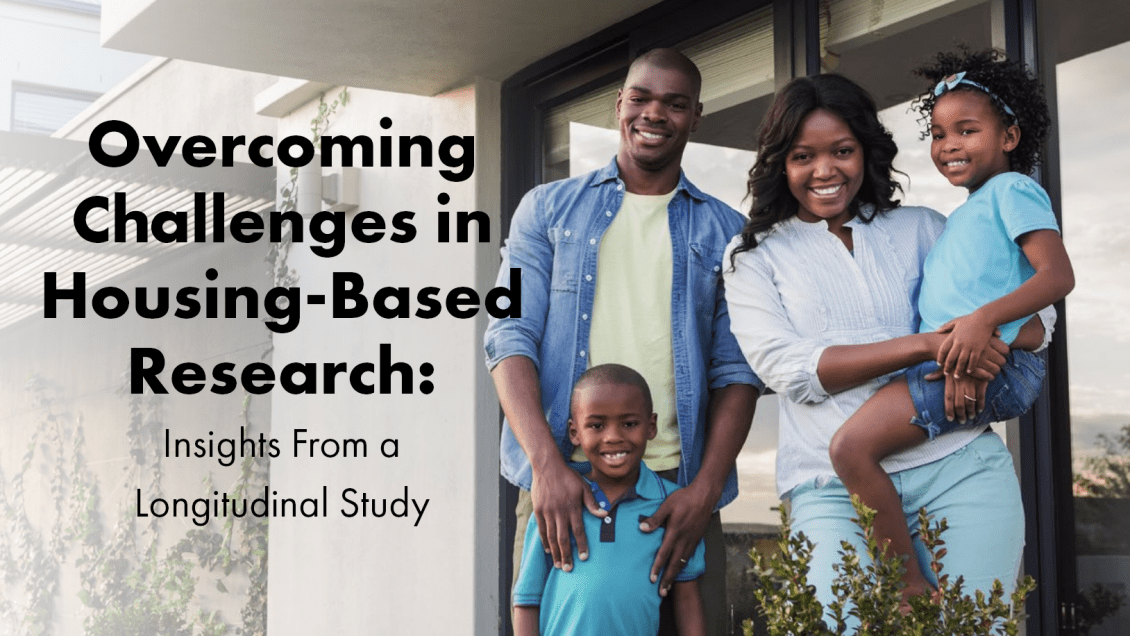Affordable housing is a vital platform for promoting resident health. In 2013, Enterprise Community Partners (Enterprise), The JPB Foundation (JPB), the National Center for Healthy Housing, and several university partners embarked on a multiyear, multisite study of green building practices. Known as the Healthy Home, Happy Kids (HHHK) study, this longitudinal housing-based research sought to measure the effect of green building practices on the respiratory health of residents living in affordable housing.
Despite the expected positive health outcomes of green building practices, developers face many financial constraints in constructing and rehabilitating affordable housing properties. Understanding how green building practices benefit resident health can help developers prioritize these practices. The early architects of the HHHK study designed the study with sufficient rigor to determine definitively whether such practices lead to positive health outcomes. They envisioned transforming the affordable housing financing system to demand green building features, ultimately ensuring that all residents of affordable housing in the United States will benefit from the health-promoting features of green housing.
While the study’s data and findings will not be released until 2021, the research team thought it valuable to share with the field the many lessons learned throughout the course of the study. In its report, Overcoming Challenges in Housing-Based Research: Insights from a Longitudinal Study, the team offers a candid assessment of their experience, as well as perspectives from others involved in the project. Many of the insights detailed in the report, and summarized below, highlight the unique challenge of conducting research in an affordable housing setting and emphasize the need to embed community-based participatory research (CBPR) methods throughout the research process.
Insight #1: Identify key stakeholders and include them in the study design planning process.
- Designate time and funding to allow for a planning process
- Assemble and engage an advisory council
- Engage representative stakeholders
Insight #2: Create a strong team and the project infrastructure needed for a complex study.
- Create a project team that includes experienced staff familiar with the community or population of focus
- Include members of the advisory council on the project team
- Incorporate resident participation on the project team and provide training and support
Insight #3: Pilot test the study design.
- Designate enough time and funding to pilot test data collection methods
- Identify target properties and test feasibility
- Confirm the skills and experience needed for the research team
Insight #4: Build strong relationships with developers, property managers and residents.
- Anticipate liability concerns and consult with advisors and legal experts
- Incorporate sufficient time for relationship building
- Create property-specific recruitment plans
Insight #5: Pursue flexibility and creativity in adapting to implementation challenges with strong support from funders and advisors.
- Create regular feedback loops
- Acknowledge the need for flexibility and the unpredictability of housing-based research
- Engage a diverse set of perspectives to identify creative solutions
Although the HHHK study was not originally designed as community-based participatory research, applying those principles as the study progressed enabled the research team to navigate numerous obstacles and challenges. Given the unique characteristics of each study property – its owner, its management, and its residents – the team applied various techniques and learned, through trial and error, what worked and what did not. A more intentional effort to bring CBPR methods into the planning and design phase of future housing-based research studies can avoid some of the pitfalls experienced. More important, such methods recognize and respect community members, enhancing the probability of success and findings that will lead to needed social change.
The reflections and lessons shared throughout the report are offered in the spirit of collaboration and transparency, with the hope that others will benefit from them and continue to pursue research that tests solutions and explores the value of affordable housing as a platform for improving individual outcomes and stronger communities.
